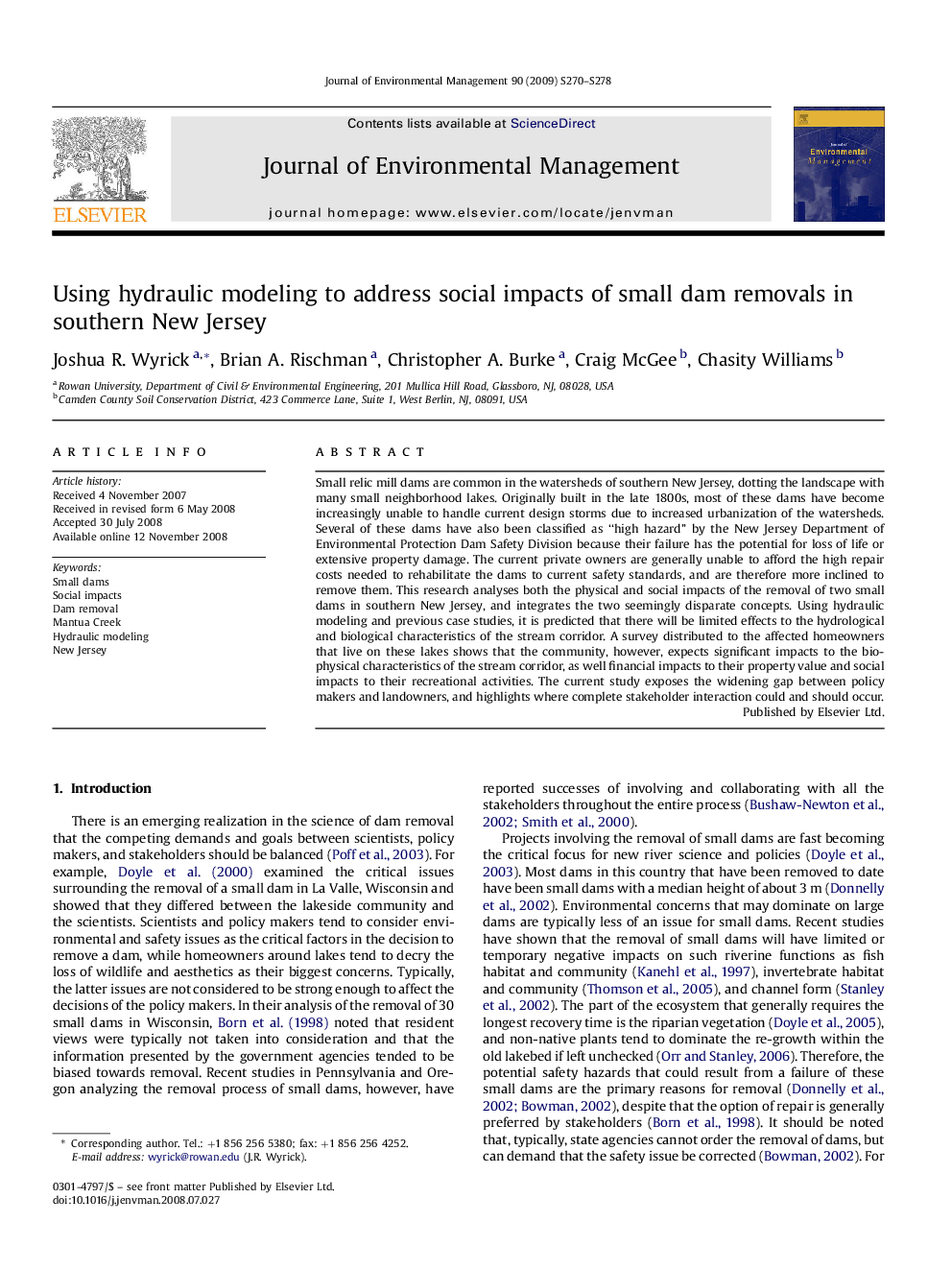| Article ID | Journal | Published Year | Pages | File Type |
|---|---|---|---|---|
| 1057841 | Journal of Environmental Management | 2009 | 9 Pages |
Small relic mill dams are common in the watersheds of southern New Jersey, dotting the landscape with many small neighborhood lakes. Originally built in the late 1800s, most of these dams have become increasingly unable to handle current design storms due to increased urbanization of the watersheds. Several of these dams have also been classified as “high hazard” by the New Jersey Department of Environmental Protection Dam Safety Division because their failure has the potential for loss of life or extensive property damage. The current private owners are generally unable to afford the high repair costs needed to rehabilitate the dams to current safety standards, and are therefore more inclined to remove them. This research analyses both the physical and social impacts of the removal of two small dams in southern New Jersey, and integrates the two seemingly disparate concepts. Using hydraulic modeling and previous case studies, it is predicted that there will be limited effects to the hydrological and biological characteristics of the stream corridor. A survey distributed to the affected homeowners that live on these lakes shows that the community, however, expects significant impacts to the bio-physical characteristics of the stream corridor, as well financial impacts to their property value and social impacts to their recreational activities. The current study exposes the widening gap between policy makers and landowners, and highlights where complete stakeholder interaction could and should occur.
